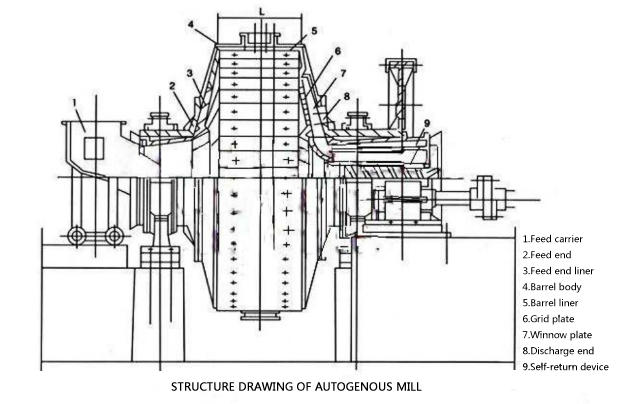Autogenous mill is a kind of ore grinding equipment with the function of crushing and powder grinding. It used the grinded material as a medium to crush through mutual striking and grinding. Autogenous grinding feeds the big size ore with the maximum size up to 300mm – 500mm directly into the autogenous mill. Due to the different blocks of ore driven in the grinding equipment generate the similar movement as it did in ball mill, in this way, the ores in mill can be crushed by grinding and strongly striking with each other.
The most important feature of autogenous mill is feeding the raw material from stope or the primary crushed ore into the grinder. Normally the materials are fed into the rod mill according to the granularity ratio. The autogenous mill can grind the material to -0.0744mm. Its content takes up more than 20%-50% of the total output. The crushing ratio can reach 4000-5000 more than ten times higher than the ball and rod mill.
The autogenous mill consists of main bearing, barrel body, drive parts, cylinder screen, main motor, low speed driven device, jacking device, lubrication system and electrical control system. See the following figure:

The structure features:
(1) Big diameter, short length, shaped like a flat drum. The ratio between length and diameter (L/D) is around 0.3 – 0.35. Because the ore itself is the medium of ore grinding, the “segregation” phenomenon caused during ore grinding will reduce the mill working efficiency;
(2) The big diameter of hollow pivot on both ends of barrel body can match the fed ore size;
(3) The center part of barrel liner in the wet autogenous mill is concaved downward, so as to prevent the crushed material granularity from separating.

